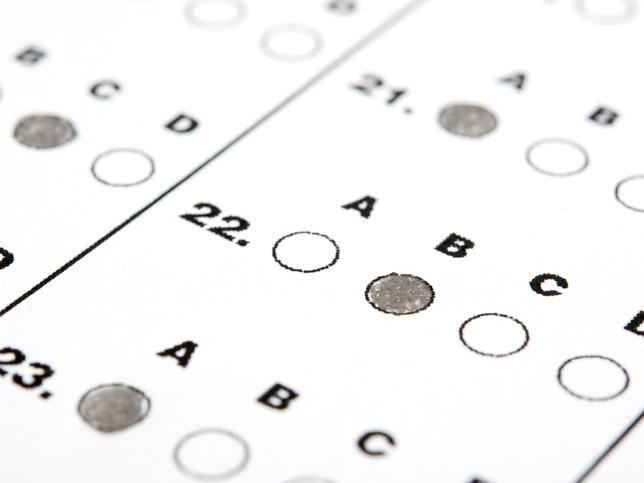Ungrading has dramatically increased my ability to provide a flexible, individualised learning environment. By placing the focus on feedback rather than ranking, I was able to collaborate with students to better support their learning. I am finally able to focus on my real job: helping my students learn.
Why I ungrade
Since the onset of the pandemic, many of my colleagues and I have noticed higher student anxiety and stress, as well as a need for greater flexibility in our classes. My solution to these challenges was to implement ungrading.
I teach small, in-person classes of 10 to 20 students in undergraduate geology. Over the years, I’ve transitioned away from lecture-focused courses towards class sessions in which students engage directly with the material through discussion, labs, worksheets and hands-on model building. I decreased the weight placed on tests and increased points given for in-class activities and low-stakes assignments.
It took a pandemic for me to finally realise that even this well-intentioned change was penalising the students who struggle with attendance for health reasons. I spent too much time manipulating my grade book in the name of “fairness,” and it was getting in the way of their learning.
How I ungrade
So last year, I started using ungrading in my classes. There are many ways to ungrade; I use a self-assessment with conferencing method. I assign no points, scores or grades on any assignments or assessments. Instead, I give feedback in the form of comments. For larger assignments such as tests and projects, I give the opportunity for students to correct mistakes. My tests and assignments ask open-ended short-answer and essay questions. My feedback includes follow-up questions and statements that probe for evidence of deeper understanding or circling the portions of answers that need revision.
Periodically throughout the semester, I ask students to review my feedback and reflect on their learning, effort, goals and challenges in the course. After each reflection, I meet one-on-one with students to discuss their responses. I still have to assign grades at the end of the semester, so I also ask students to assign themselves a grade supported by evidence of their work and learning. The final grades are decided during post-reflection conferences.
Ungrading tips
During my first semester ungrading, three keys to ungrading success emerged for me:
1. Trust. Build it through communicating the reasons for ungrading and being clear about your plan. Convey that you value student input on their goals and needs for learning. Mean it. Trust students to be honest with you, and they will step up.
2. Flexibility. No intervention goes exactly as planned on the first try. Be flexible with yourself and your students. In the end, what matters most is supporting their learning – not whether you’ve stuck to your exact plan.
3. Guidance. Students need to know what we’re looking for. Provide expectations and examples of well-done reflections to support development of a meaningful reflective practice. Communicate a clear focus on learning through thoughtful feedback and revision opportunities. Start with a clear structure for the semester that outlines a schedule of all assignments, readings and reflections.
Note that I don’t consider structure and guidance to be at odds with flexibility. I lay out specific criteria for the grade categories in the syllabus, but then invite students to describe their own goals and how their work demonstrates learning differently from the guidelines. I communicate that, although this was my course plan, I am open to other options for documenting learning.
Ungrading changed my classes and my mindset
After one semester, I noticed that my students were just as (if not more) motivated to do their work, open and communicative with me about their course progress, and were developing the skill of self-assessment. In their feedback, they said that ungrading took the pressure off and that they were able to focus on their learning. As a teacher, I had a better understanding of my students’ needs and interests, as well as greater flexibility to respond to students’ major life interruptions. I found that I was finally able to let go of the “enforcer” mindset – my job became more about supporting learning as I let go of “policing” compliance.
Some students expressed uncertainty early in the semester about the ungrading system. I tried to address this by talking openly and often about the process early on, as well as in the one-on-one conferences, and by late in the semester, these concerns seemed to fade.
Ungrading has dramatically increased my ability to provide a flexible, individualised learning environment. By placing the focus on feedback rather than ranking, I was able to collaborate with students to better support their learning. I am finally able to focus on my real job: helping my students learn.
- What does good assessment look like online?
- Assessing your assessment: creating inclusive and meaningful assignments
- Planning assessment to promote academic integrity online
Ungrading resources:
My ungrading design was influenced by the work of Clarissa Sorensen-Unruh, chemistry professor at Central New Mexico Community College, much of which can be found on her website Reflective Teaching Evolution.
Other excellent resources on ungrading include the co-founder of Digital Pedagogy Lab Jesse Stommel’s webpage and the book Ungrading: Why Rating Students Undermines Learning (and What to Do Instead), edited by anthropologist Susan Blum, who explores further pedagogical questions in her blog.
Katharine Johanesen, associate professor of geology at Juniata College.




comment